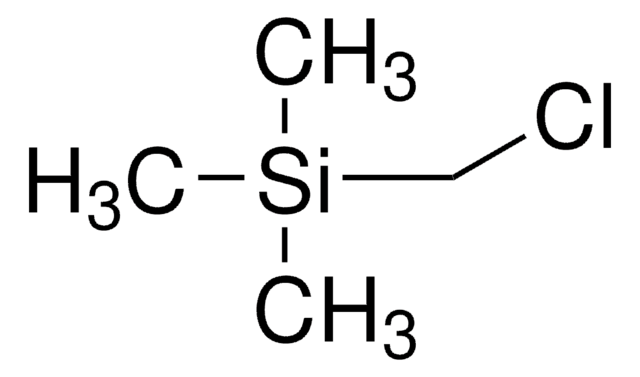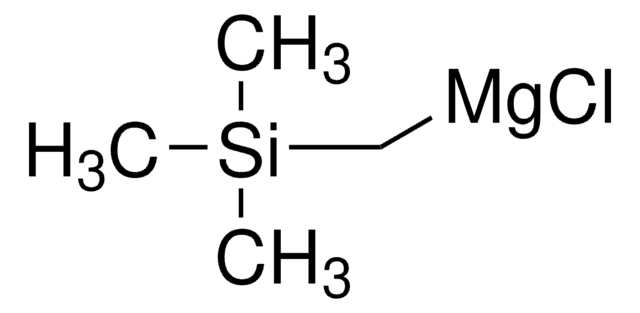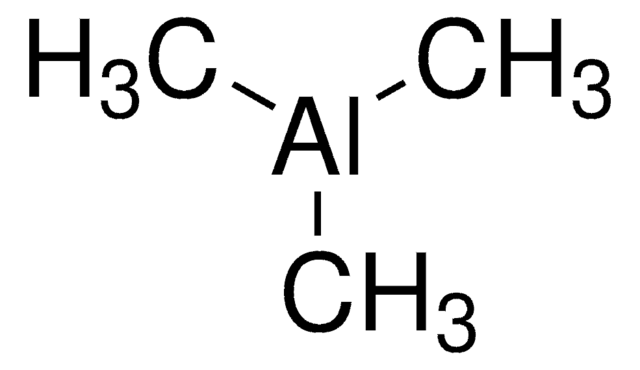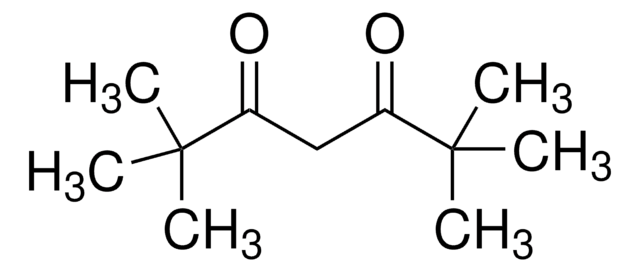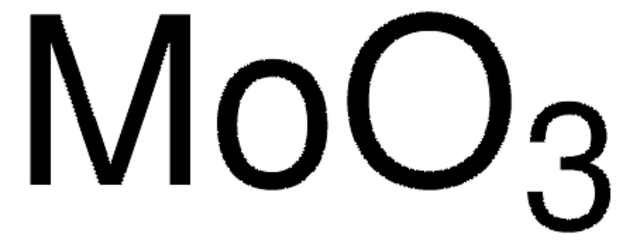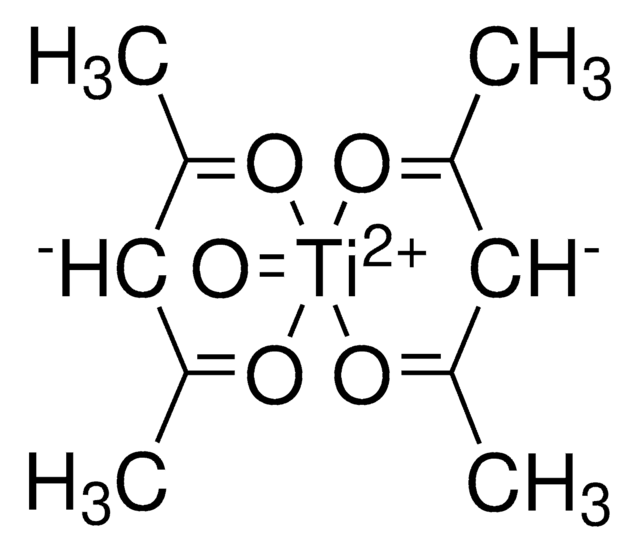Wichtige Dokumente
227749
Bis(acetylacetonat)dioxomolybdän(VI)
Synonym(e):
MoO2(acac)2, Molybdenum diacetylacetonate dioxide, Molybdenum dioxide bis(acetylacetonate), Molybdenum dioxydiacetylacetonate, Molybdenyl acetylacetonate
About This Item
Empfohlene Produkte
Form
powder
Qualitätsniveau
Eignung der Reaktion
core: molybdenum
reagent type: catalyst
mp (Schmelzpunkt)
184 °C (dec.) (lit.)
Lagertemp.
2-8°C
SMILES String
CC(=O)\C=C(\C)O[Mo](=O)(=O)O\C(C)=C/C(C)=O
InChI
1S/2C5H8O2.Mo.2O/c2*1-4(6)3-5(2)7;;;/h2*3,6H,1-2H3;;;/q;;+2;;/p-2/b2*4-3-;;;
InChIKey
SKMUJBBRXZPAJY-VGKOASNMSA-L
Allgemeine Beschreibung
Anwendung
- As a starting material to synthesize dioxomolybdenum(VI) Schiff base complexes, applicable as catalysts in the oxidation of alcohols using H2O2.
- To prepare graphene oxide supported heterogeneous molybdenum catalysts for epoxidation of olefins.
- As a catalyst in the etherification and thio-etherification reactions of thiols and alcohols.
Signalwort
Warning
Gefahreneinstufungen
Acute Tox. 4 Dermal - Acute Tox. 4 Inhalation - Acute Tox. 4 Oral - Carc. 2 - Eye Irrit. 2 - Skin Irrit. 2 - STOT SE 3
Zielorgane
Respiratory system
Lagerklassenschlüssel
11 - Combustible Solids
WGK
WGK 3
Flammpunkt (°F)
Not applicable
Flammpunkt (°C)
Not applicable
Persönliche Schutzausrüstung
dust mask type N95 (US), Eyeshields, Gloves
Hier finden Sie alle aktuellen Versionen:
Besitzen Sie dieses Produkt bereits?
In der Dokumentenbibliothek finden Sie die Dokumentation zu den Produkten, die Sie kürzlich erworben haben.
Kunden haben sich ebenfalls angesehen
Unser Team von Wissenschaftlern verfügt über Erfahrung in allen Forschungsbereichen einschließlich Life Science, Materialwissenschaften, chemischer Synthese, Chromatographie, Analytik und vielen mehr..
Setzen Sie sich mit dem technischen Dienst in Verbindung.

